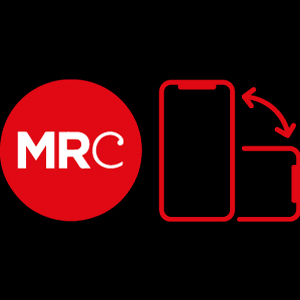The claims versus the facts
1). The Newspaper Society promises “tough sanctions” and it keeps big fines for “serious or systematic breaches”. But it limits the regulator’s ability to conduct ad hoc reviews to cases of “systemic” rather than “serious” abuses (Schedule 2, paragraph 7) and raises the bar for third party complaints – demanding not only an “alleged breach of the code” but a “significant” one, and a “substantial” public interest (S3, 11). 2). The NS boasts of “up-front corrections” printed “fully and prominently”. But their Charter throws subtle but serious spanners in the works of justice. Like the inadequate February draft, it only allows a regulator to “require”, not “direct”, and replaces “corrections and apologies” with a generic “remedy” (s3, 15). And while it technically retains the power of a regulator to affect the prominence of a correction if the complainant is unsatisfied, they are no longer “pursuant to criterion 10”. That paragraph demands papers adopt “an adequate and speedy complaint handling mechanism” and that they handle complaints within “an appropriate time”. Decoupling these demands from the regulator’s powers of prominence could open a back door to endless prevaricating and pussyfooting from an industry which the Leveson Report accused of “vigorously” resisting complaints “almost as a matter of course…even when there can be no argument”. 3). The Newspaper Society says its Charter allows “strong investigative powers” to independently stop wrongdoing. This is nonsense. It removes the requirement for investigations to be “simple and credible” (S3, 18) and bins the “ring-fenced enforcement fund” (19), allowing the regulator to set up empty shell investigations which never get to the bottom of anything. 4) The NS claims there’ll be public involvement in the framing of the Code of Practice. In fact, it removes an explicit requirement for a “biennial public consultation” which “must be considered openly”. Moreover, it cuts serving journalists out of the code committee, returning it to editorial control. After all, it wouldn’t be in the interest of proprietors for their workers to decide what they can’t be ordered to do. 5) The Newspaper Society promises “genuine independence from the industry and from politicians”, this is where the press barons have made their most determined assault against what the three parties agreed, and where it’s most important to dissect what they’ve done. As Wright admitted on air, his new Charter allows members of the House of Lords to serve on both the appointments committee of the recognizer (s1, 2.4) and the main board (s1, 3.3) of any new regulator (who could they be thinking of?). It removes any ban on serving members of either house working for the recognizer (7.3), and trashes the requirement that board members must be able to “act fairly and impartially” (S3, 5e-f). This Charter allows for far greater political interference at every level – only by politicians the industry has picked. Meanwhile, it guarantees a whip hand for Pressbof in the formation and funding of the recognizer, and sweeps away the more pernickety language preventing industry interference. In March the regulator board had to “comprise a majority of people who are independent of the press”; in this version it must only “include” them. The cross-party Charter bars from both the recognition board and its appointments committee a member who “has been” an editor or “otherwise involved” in publication (s1, 3.3); all these are gone. On the other hand, as Wright made clear, his plan brings back the old ‘press veto’, allowing proprietors’ cronies to have final say over major decisions. This is independence lite at best, guaranteed press control at worst. Indeed, the proposed Charter establishes a two-tier standard for influence: where the cross-party version said the regulator must act “without any influence from industry or government,” this one specifies “direction from industry or influence from Government” (s3, 1). It even waters down the definition of an ‘editor’ from someone “who acts in an editorial capacity” to someone who “holds overall responsibility for editorial content” (S4, 2e). And just in case you were worried that the press might pull the strings of the new regulator by appointing their favoured sons, the new Charter adds this disclaimer: “Members of the Appointments Committee shall serve in a personal capacity.” So that’s all right then!What they don’t mention
Beyond all this there is a raft of differences that neuter the ability of a new regulator to serve our justice. In a step back even from the February document it does away with any requirement for an arbitration arm, mandating only that the regulator “may provide an arbitral process” and “may” operate a pilot scheme to test that out. Even if they do set up an arbitrator, Thursday’s Charter replaces “free for complinants” with “inexpensive” and removes “inexpensive for all parties”. This places extra barriers in the way of complaints and allows the press to squirm out of one of Leveson’s key recommendations. On and on it goes, removing the ability of the regulator to provide advice to the public, to publish non-binding guidance on interpretation of the public interest, or to run a whistleblowing hotline. Basically, the new charter says, it’s not the business of the regulator to think about how journalism should work from any wider perspective. It should only, like the PCC, stick to individual complaints – and throw as many barriers in their way as possible. They have even removed the ability of regulators to “make membership potentially available on different terms for different types of publisher” – which sounds like they want to avoid giving small competitors associate membership.What they’re really scared of
The press loves to make out like the deal which was finally agreed by all three parties was some kind of rushed affair, reached at “late-night” over “pizza” and so forth. The reality is that it followed four months of intense consultation and lobbying in which the press companies went behind closed doors with the government and hid their dealings from the public. As Enders Analysis notes:“When Lord Justice Leveson delivered his report in late November last year, a process of negotiations began between the newspaper industry, represented by a negotiating panel including Peter Wright, Paul Vickers and Guy Black, and the Government. A long process of private meetings took place, usually with Maria Miller and Oliver Letwin, which lasted until mid-February. A secret draft of the Royal Charter being devised was leaked by Hacked Off, forcing the DCMS to publish the latest version it had. That version is dated 12 February.”
It was the House of Lords which tabled amendments to government bills which forced them to come back and negotiate with Clegg and Milliband. That led to the Royal Charter that we saw on March 18, and its basic shape had already been finalized by the previous Thursday – in the open, with industry input too (gasp). By contrast, this broadside from the press barons is an attempt at unilateral regulatory capture. It goes even further than the February draft in watering down the Leveson Report and for that reason it’s hard to see the government accepting it. If they do, Labour and Lib Dem peers will once again take hostages in the Lords, and they’ll end up in the same legislative deadlock. This is a sabre-rattling attempt to scare the country into submission, which, according to Roy Greenslade, may actually stop the Privy Council from being able to ratify the cross-party Charter. What do they really fear? You only need to look at their biggest and most comical change. Right at the beginning of Schedule 2, the Cross-Party charter says:“In making its decision on whether the Regulator meets those criteria [the recognizer] shall consider the concepts of effectiveness, fairness, and objectivity of standards, independence and transparency of enforcement and compliance, credible powers and remedies, reliable funding, and effective accountability…”
Behold: a catalogue of everything the press barons don’t want a regulator to be. In their Charter, this paragraph is simply gone. Whether or not it receives any consideration from the government, the newspapers who have launched this rival document have shown their hand. They’re not afraid of politicians, because they can be lobbied, and they’re even allowed to join. What really scares them is the idea that ordinary people might get easy and fair access to justice through a system which is genuinely independent of their agendas.


